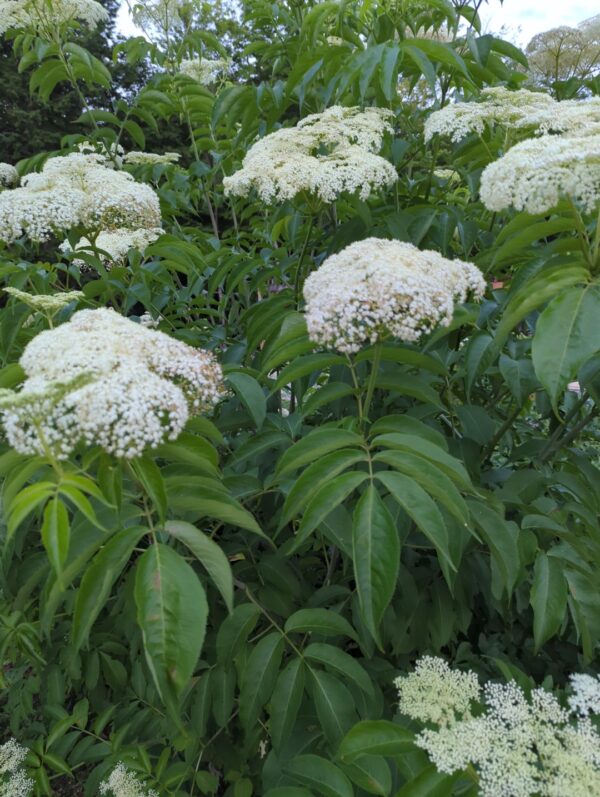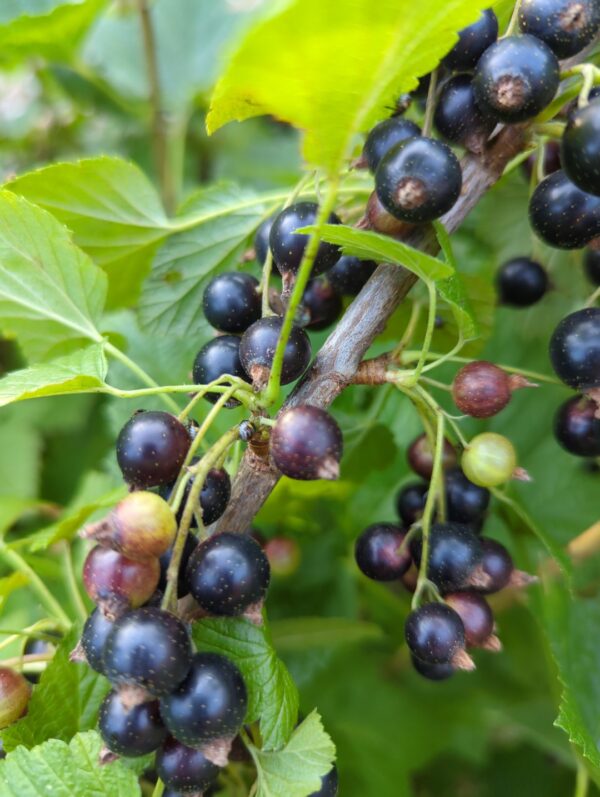Your cart is currently empty!
Description
Haskaps (Lonicera caerulea), more recently called honeyberries, are cold-hardy, early-fruiting shrubs that thrive in gardens with well-drained soil and full sun to partial shade. They produce small, elongated blue berries with a sweet-tart flavor, rich in antioxidants. Haskaps are low-maintenance, resistant to most pests and diseases, and require at least two different cultivars for cross-pollination.
In zone 5 they are one of the earliest fruit/berries we can grow. These are one of the hardiest plants we have. They can survive in Zone 2! They are very easy to care for and need almost nothing. A light pruning during early spring can help keep the plant vigorous. Aim to remove a small portion of the 3 year old (or older) wood every year so that every several years plant is entirely refreshed.
Planting instructions are very simple, Push the first two nodes into the soil so that the higher of the two bottom nodes is just below the surface, Water in very well and if possible provide partial to nearly full shade for the first 30-40 days. This keeps sun stress off of the young cutting while it starts to send out roots.
| Category | Details |
|---|---|
| Botanical Name | Lonicera caerulea |
| Common Names | Haskap, Honeyberry, Blue Honeysuckle |
| Hardiness Zone | Zone 2-7 (Tolerates extreme cold, down to -40°F/-40°C) |
| Soil pH | 5.5 – 7.0 (Prefers slightly acidic to neutral) |
| Soil Type | Well-drained, loamy soil with good organic matter |
| Sunlight | Full sun to partial shade (Best fruiting in full sun) |
| Water Needs | Moderate; keep evenly moist, especially in dry spells |
| Pollination | Most varieties Requires two different cultivars for cross-pollination |
| Bloom Time | Early spring (blooms before last frost) |
| Harvest Time | Late spring to early summer (one of the first berries to ripen) |
| Growth Habit | Multi-stemmed deciduous shrub, 4-6 feet tall & wide |
| Fruit Description | Small, elongated blue berries with a sweet-tart flavor |
| Pests & Diseases | Generally pest-resistant; watch for aphids & powdery mildew |
| Pruning Needs | Light pruning in late winter or early spring to shape and remove dead wood |
| Lifespan | Long-lived, producing fruit for 30+ years |
Additional information
| Weight | N/A |
|---|---|
| Cuttings | 3 Cuttings, 6 Cuttings |

















